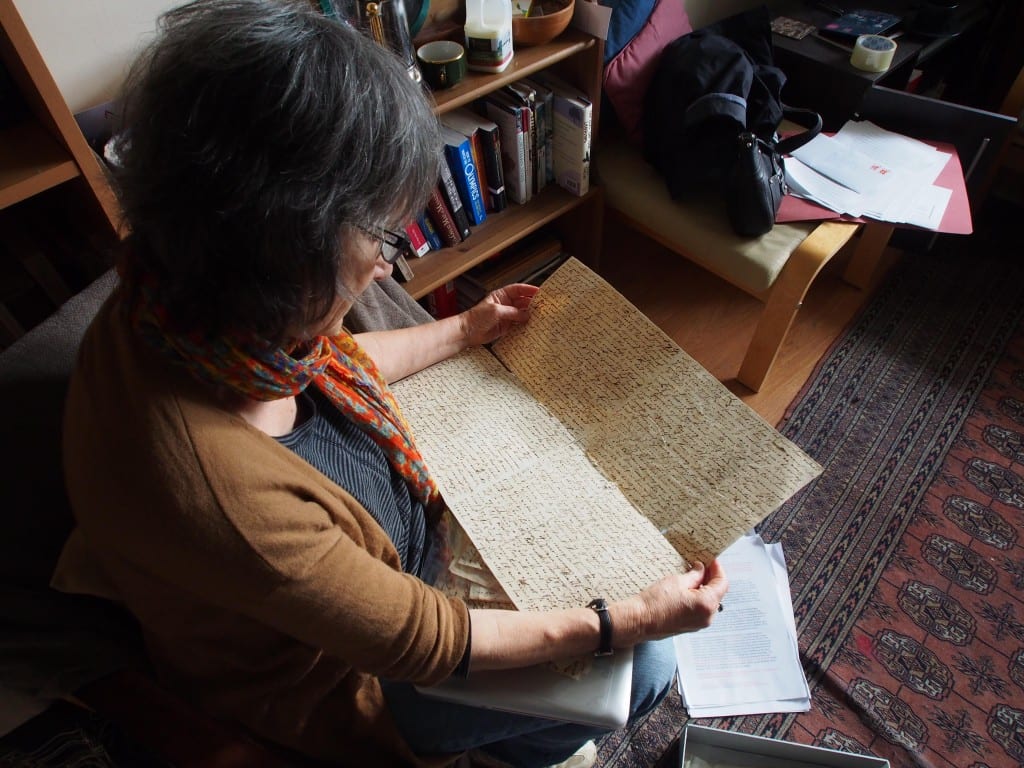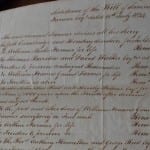 The career of William Gamul Farmer (1746-1797) in India, 1763-1795
The career of William Gamul Farmer (1746-1797) in India, 1763-1795
By Penelope Farmer
Please note that this case study was first published on blogs.ucl.ac.uk/eicah in April 2014. The case study was last checked by the project team on 19 August 2014. For citation advice, visit ‘Using the website’.
This case study originated in a collection of family letters that travelled between England and India from 1763 to 1795. They were generated by the long absence from England of one family member, William Gamul Farmer, who was sent to India at the age of sixteen as an East India Company servant. More recently this material has been augmented by the appearance of William’s private letter book containing most of the letters he wrote between 1794 and 1796, before leaving India for good.
The family letters alone offer insights into the private and social workings that underpinned the imperial and mercantile enterprise of the East India Company (EIC). They suggest how families held themselves together despite the vast distances in time and space that separated them, and how crucial a sibling relationship could be in helping to provide for a Company servant in India both materially and psychologically. At the same time they show how frustrating and sad the whole process could be for a mother lamenting her son’s absence from home and family and who, despite obvious energy and ability, could only affect his career in minor ways, even though she gave him – and us reading her letters now – much fuller and more lively insights into the contemporary life he had left behind in England than his other correspondents. At least one letter (from William) throws new—Indian—light on how one family managed to rise from the merchant class into the country gentry. More personally—for me—almost all the letters demonstrate recognisable family characteristics persisting through the generations.
The letters in the letter book, written between 1794 and 1796 at the end of William’s career, have less to offer on such a private level. On the other hand, they are in places as intimate as the earlier individual letters – in some respects even more so. Addressing men to whom after years in India he has often been closer than to members of his family, the writer seems able to admit more freely to his hopes and regrets and his lack of family life – he never married – than he can express to his younger brother. His sometimes affectionate letters to Indian colleagues—with their use of Indian terms, references to Indian festivals and legal processes—suggest, too, how deeply embedded William Gamul Farmer was in an Indian life that could have meant very little to those at home. The survival of such a complete collection of records is unusual. Farmer’s comments on financial deals, political events, and political problems in his rich correspondence augment our knowledge of East India Company business and the English men who conducted it.
 The Letters
The Letters
The Farmer family letters, preserved in a dispatch box held in the family mansion at Nonsuch Park in Surrey, passed on to Penelope Farmer’s father at the sale of the house in 1937. After her father’s and her brother’s deaths, the dispatch box fetched up in a niece’s house in Wales, where Penelope encountered the letters for the first time, two years ago. Here Penelope describes the letters and the narratives their contents gesture towards.
 The Farmer Family
The Farmer Family
Like other East India Company families separated by empire, the Farmer family maintained a sense of belonging to each other through letters and gifts. In this section Penelope uses the family letters to uncover the complex dynamics at play within the Farmer family of the eighteenth century.
 William Gamul Farmer’s career
William Gamul Farmer’s career
William Gamul’s letters from Bombay in the 1760s reveal some of the inner workings involved in his East India Company life. Ultimately the letters underline the pressures placed upon William to make money while in India. They also reveal what such pressures meant in terms of involvement in private trade, decisions about marriage, health concerns and of course, the wider family.
 William Gamul Farmer’s fortune
William Gamul Farmer’s fortune
Questions about William Gamul Farmer’s Indian activities were a part of his life there. Here Penelope investigates the suspicions that arose around his financial arrangements and imperial activities. This section also explores his desire to go home and what happened when he finally returned to England.
 Conclusion and timeline
Conclusion and timeline
Finally, Penelope reflects on William Gamul’s life and letters and questions the relationship between his history and her own.
To read the case study as a PDF, click here.
Acknowledgements
The text and research for this case study was primarily authored by Penelope Farmer, a published author who has been closely involved in the East India Company at Home project since our first study day at the British Library in March 2012.
Comments
On 17 June 2014, Jennifer Young left the following comment:
Hello Penelope,
I came across your article on William Gamul Farmer today whilst transcribing the Will of John Moore of late of Bombay, Naval Commander of the Honourable East India Company. I entered William’s name into Google to check I had the correct spelling and was delighted to see that indeed I did have the correct spelling, but also because there was so much information about him.
There are several references to William Gamul Farmer who was an acquaintance of Moore and is mentioned as being on the ship as a passenger. Moore died on that trip and prior to his death had given Moore’s Will and Codicil to present them to his Executors. As you have his diaries and papers I was wondering if perhaps William had mentioned the death of Moore in details.
Kind regards,
Jennifer